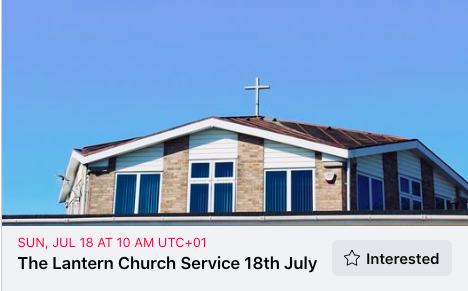How to Use a Church Social Media Strategy to Grow Your Congregation
Struggling to find new ways to grow and engage with your congregation? Incorporate these proven church social media strategies into your marketing.

Struggling to find new ways to grow and engage with your congregation? Incorporate these proven church social media strategies into your marketing.

A church social media strategy is one of the best ways to share information with your community.
81.5% of the U.S. online population use social media apps, and churches that aren’t using social media to their advantage are missing out.
Churches know a thing or two about connection, and connection is at the heart of every social media strategy.
The goal is to reach out and share information that is going to inspire, engage, or interest your audience. Whether that’s an upcoming event, an exciting piece of community news, or volunteer opportunities.
The reality is we spend nearly 2.5 hours on social media each day, and a strong church social media strategy is one of the best ways to bring in faces old and new.
It would be amazing if every single post reached everyone we wanted it to, but unfortunately, social media algorithms don’t work like that.
While a social media presence is a great start, it’s not quite enough. Every time you hit ‘publish’ you should know exactly who you want to see your post, and why you want them to see it.
Having a clear understanding of this is the key to taking your church social media strategy to the next level.
Next, we’re going to talk you through how to achieve two major goals churches have for their social media channels.
Facebook is the most popular social media platform out there, which is why it’s the best place to start if you’re looking to interact with current members of your congregation.
Rather than relying on a Facebook page to reach people, create a group to kick-start your church social media strategy.
For most of us, social media is a personal tool used to keep friends and family up to date with our lives. We share photos and videos, post statuses, and comment on other people’s profiles.
Facebook groups are all about building connections between people. Facebook allows groups to be public or private and gives members the opportunity to invite others.
Where Facebook pages are best used to share your own updates, a Facebook group inspires conversation and offers a place for like-minded church members to connect.
Post ideas include inspiring quotes, sections from the Bible, or sharing blog posts for group members to discuss.
Using a Facebook group will allow you to interact with your church members when they are not worshipping. This develops relationships between members who may attend at different times or not be familiar with one another.
Creating a Facebook group is the first step, but ensuring it’s joined by members of your congregation is the most important part.
We’ve seen a lot of churches successfully use SMS keywords to invite members to their Facebook group. (A keyword is a word or phrase that your members can text in to receive an automatic SMS.) Our friends at Central Church are a great example.
For example, you could ask members to text “AMARILLOFB” to your phone number. They’ll then automatically receive a text message with a link to join the group.
The best part is that you now also have permission to text these people other important updates and information––whether that’s a sermon series or about a Sunday service.
There’s a ton of other ways you can use a church text messaging service, here are several ideas.
If you want to increase the membership of your church, it’s important to bear in mind the best uses of each specific social media platform.
Every social media platform sees an increase in engagement when visuals are used, and Instagram and Tiktok are image-led platforms.
Speaking of daily musings, check out how Life Worth Living Church sends out daily devotionals with SMS.
On Tiktok, everybody has a ‘For You Page’ on which the algorithm will place random videos it thinks are relevant to the user.
For example, if you are posting church content in Charleston, you will be more likely to reach the ‘For You Page’ of users who consume either church content or Charleston content.
It sounds complicated, but the most important thing to know is that your content could inspire new members to join your church. Every video you post on Tiktok should be high-quality and truly represent your church community.
Instagram has similarities with Tiktok, except the ‘For You Page’ is instead a ‘Search Page’, on which are endless photos and videos which your Instagram believes are relevant to you.
These photos are a mixture of content the people you follow have liked, and content similar to the posts you like yourself.
If your church members follow and engage in your posts, these posts are then more likely to appear on the Search page of friends and family of church members in the community.
Instagram also allows you to tag your location, causing your posts to appear when others use the search tool. This could be your city, suburb, or the name of your church, but actively tagging your location is a great way to let others know both who you are and where you are.
You can make a hashtag out of any word or phrase. Hashtags are a great search tool for those looking for specific posts, and can also be used by those posting to group relevant posts together.
The most popular hashtags for churches are #church #jesus and #god – unsurprising, right? However, the best thing you can do for your church social media strategy is to use a variety of hashtags from the most popular, to the most niche.
Other popular hashtags for churches include #churchfamily #ourchurch #churchflow, but you can always create your own hashtags based on the name of your church, your town, or even your pastor.
Instagram allows up to 30 hashtags, whilst TikTok is more limited due to the caption of each video being restricted to only 100 characters.
Using hashtags will share your posts with a wider audience, making it easier for potential new attendees to find you, and there’s no harm in using them!
One of the most popular tools offered on Facebook is the ability to create an ‘event’.
Facebook events are invitations that can be sent to a group of people detailing the upcoming event of a business, charity, community, or even just an individual.
The likelihood is others in the community will be interested in your church events, and inviting them to a Facebook event is a great way to reach people.
Not only does Facebook offer the opportunity to attend or decline and invite, but you can also register your interest. This provokes a reminder to appear on the day of the event, encouraging attendees to take part.
Once you’ve created your event, you can continue to publish updates, share photos and encourage members to join you. Try not to let the event go stale after first creating it, as people will be looking to hear from you and may want more information.

If your invitation is public, it means Facebook friends of your invitees will see their response to the event through their newsfeed. This is effectively ‘social media word of mouth’ and is one of the quickest ways to grow an attendee list and show your local community what’s happening at your church.
Different people will be available at different times, so it’s always a good idea to create a new event for each one you hold. Where some may be interested in a church garage sale, others may bring their children along to a church fair.
Those who decline one event may turn up to the next one, so there’s no harm in continuing to invite them along.
Ultimately, the best church social media strategy is one that combines a mix of the tools and platforms on offer.
There are so many ways to create fun, uplifting posts to engage an audience, and your social media accounts are a great tool to inspire your church members while spreading the word of God.
Alice is a copywriter at SimpleTexting. When not teaching the world about the benefits of business texting, you can find her feeding family, friends and strangers with her latest baking experiment.
More Posts from Alice DoddKeeping over 2,000 church attendees informed isn’t easy. Here’s how Central Church uses texting to ensure its message is seen and heard.
ReadSuccessful fundraisers can help you grow your congregation and make a bigger impact on the community. Try these ideas to raise more money for your church.
ReadStart a text marketing campaign or have a 1-on-1 conversation today. It's risk free. Sign up for a free 14-day trial today to see SimpleTexting in action.
No credit card required